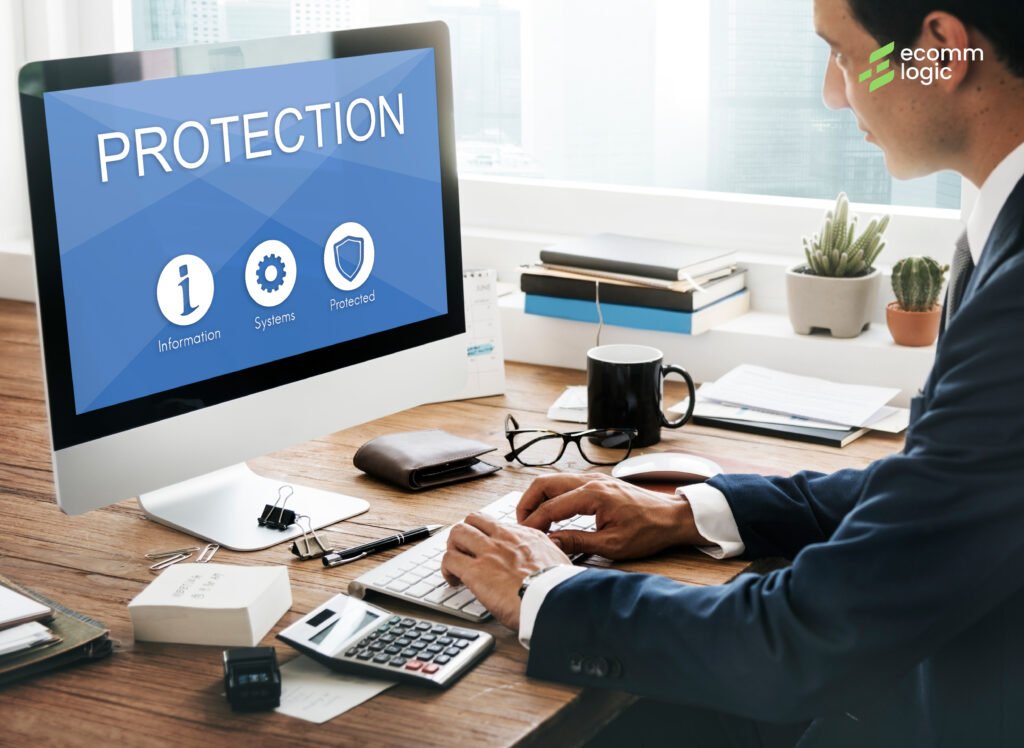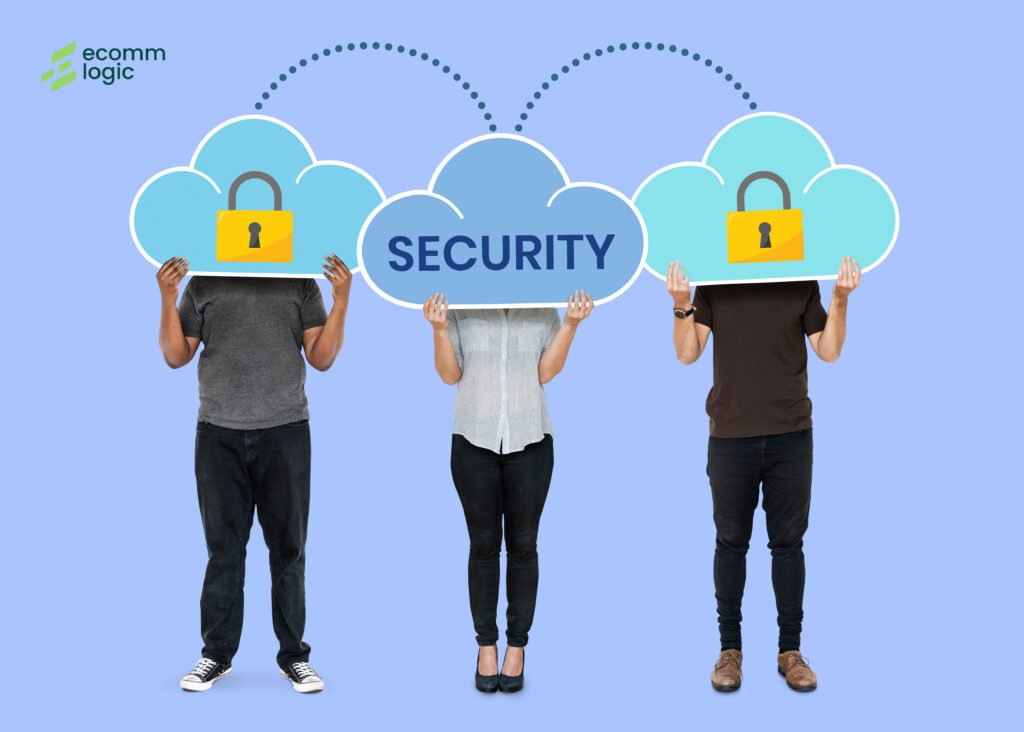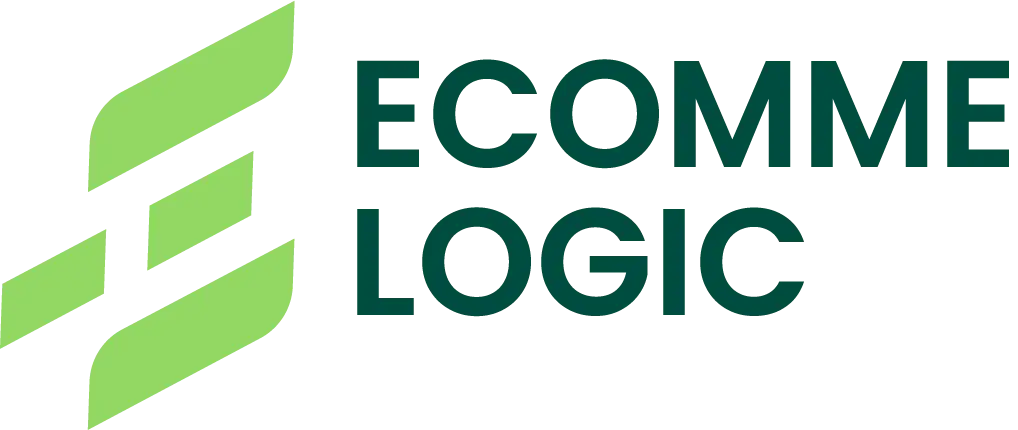The Critical Importance of E-Commerce Security
In today’s digital-first economy, online stores face unprecedented cybersecurity risks. As e-commerce continues to grow, so do the threats targeting sensitive customer data, payment information, and business operations. A single breach can lead to devastating financial losses, erode customer trust, and result in costly legal penalties under data protection regulations like GDPR or CCPA.
At EcommeLogic, we’ve helped hundreds of online merchants strengthen their defenses against evolving cyber threats. This guide outlines essential security measures to safeguard your e-commerce platform, protect customer data, and maintain business continuity in an increasingly hostile digital landscape.

Foundational Security Measures for Every Online Store
1. Encrypt All Data Transmissions with HTTPS
Every modern e-commerce site must use HTTPS encryption through an SSL/TLS certificate. This creates a secure tunnel for all data exchanged between your website and customers, protecting sensitive information like login credentials, personal details, and payment data from interception. Beyond security, HTTPS has become a ranking factor for search engines and a visual trust signal for customers—modern browsers prominently warn users when visiting unencrypted HTTP sites.
2. Choose a Secure E-Commerce Platform
Your platform choice significantly impacts your security posture. Established solutions like Shopify, WooCommerce, and Magento invest heavily in security features, regular patches, and compliance certifications. When evaluating platforms, prioritize those with active security teams, frequent updates, and built-in protections against common vulnerabilities like SQL injection or cross-site scripting.
3. Implement Robust Authentication Controls
Weak authentication remains a leading cause of breaches. Enforce strong password policies requiring complex, unique passwords for all user and admin accounts. Two-factor authentication (2FA) adds critical protection by requiring a secondary verification method beyond passwords. Additionally, implement login attempt limits and monitoring to block brute force attacks targeting your admin panels or customer accounts.

Advanced Protection Strategies
4. Maintain Rigorous Software Hygiene
Outdated software presents one of the most exploitable security gaps. Establish a disciplined update process for your e-commerce platform, all plugins/extensions, and underlying server software. Remove unused plugins to minimize potential vulnerabilities, and always test updates in a staging environment before deploying to production.
5. Secure Payment Processing Infrastructure
Never store raw payment card data on your servers. Instead, integrate PCI-compliant payment gateways like Stripe or PayPal that handle sensitive transactions through tokenization. If you must process payments directly, ensure full PCI DSS compliance including regular security scans, strict access controls, and encrypted storage for any retained payment information.
6. Deploy a Web Application Firewall (WAF)
A quality WAF acts as a protective shield, filtering malicious traffic before it reaches your site. Modern WAF solutions can block SQL injection attempts, cross-site scripting attacks, and even sophisticated bot attacks. Cloud-based options from providers like Cloudflare or Sucuri offer enterprise-grade protection without requiring complex infrastructure changes.
Operational Security Best Practices
7. Implement a Comprehensive Backup Strategy
Regular, automated backups serve as your last line of defense against ransomware, data corruption, or catastrophic failures. Follow the 3-2-1 backup rule: maintain three copies of your data, on two different storage types, with one copy stored securely offsite. Regularly test restoration procedures to ensure backups remain viable when needed.
8. Monitor for Suspicious Activity
Proactive monitoring helps detect breaches early when they’re most containable. Implement solutions that alert you to unusual traffic patterns, unauthorized file changes, or suspicious admin access attempts. Combining automated monitoring tools with periodic manual audits creates multiple detection layers.
9. Foster a Security-Conscious Culture
Human error contributes to most security incidents. Conduct regular training to help staff recognize phishing attempts, follow secure data handling procedures, and understand their role in maintaining security. Extend this education to customers through security tips and fraud prevention guidance.
10. Develop Formal Security Policies
Documented security policies ensure consistent protection across your organization. Your security framework should outline access controls, data handling procedures, vendor security requirements, and a detailed incident response plan specifying roles, communication protocols, and recovery steps for various breach scenarios.

Building Lasting Security Resilience
E-commerce security demands continuous attention as threats evolve daily. By implementing these measures systematically, you create defense-in-depth—multiple overlapping security layers that protect your business even if one control fails.
Remember that security investments pay dividends beyond risk reduction. Customers increasingly favour businesses that demonstrate strong data protection practices, and many enterprises now require security compliance from their e-commerce partners.
At EcommeLogic, we specialize in helping online merchants navigate these complex security challenges. Our team can assess your current protections, identify vulnerabilities, and implement tailored solutions that balance security with business needs.
Take the next step in securing your e-commerce future: Contact our cybersecurity experts today for a comprehensive security assessment and customized protection plan tailored to your unique business requirements.

